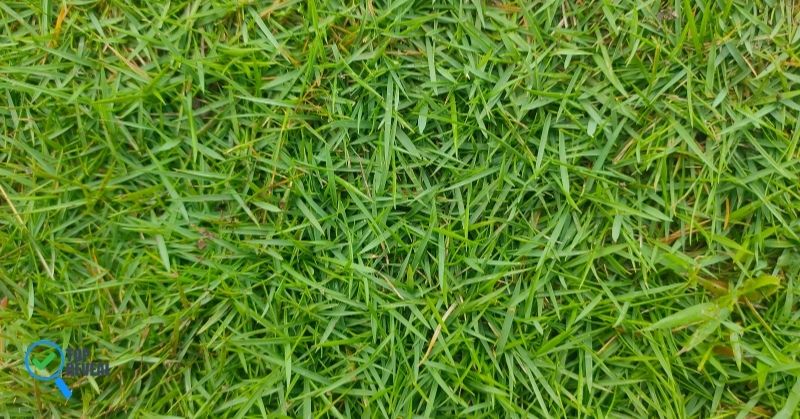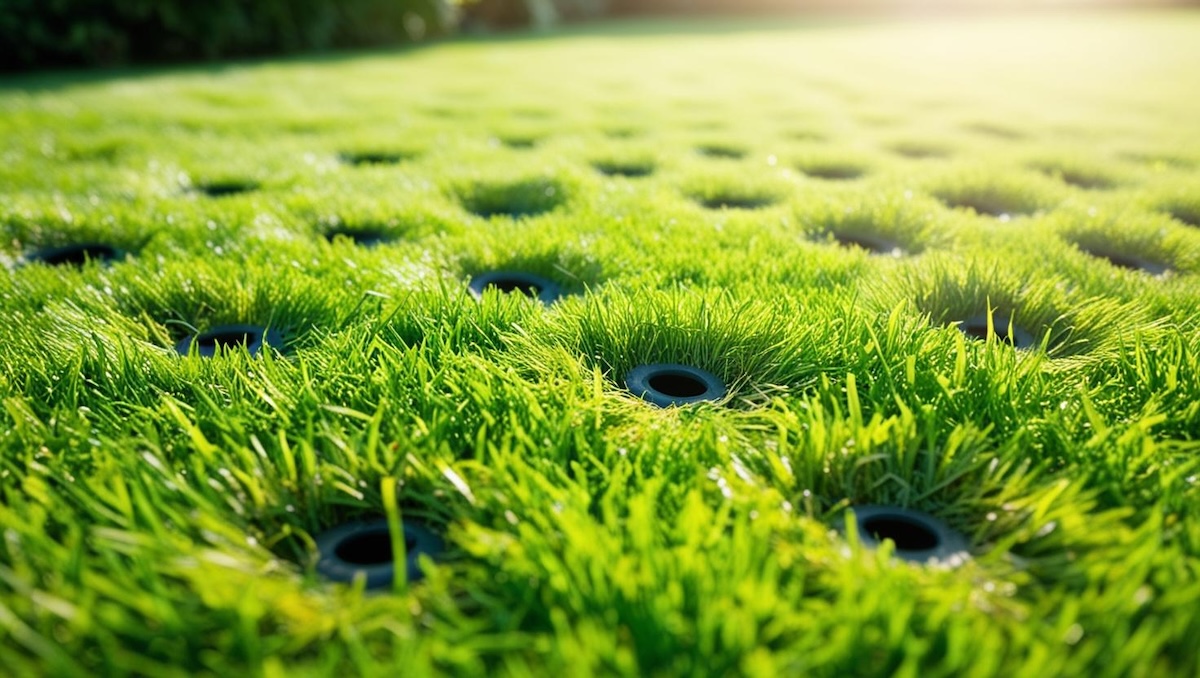
Zoysia grass is a slow-growing grass that is typically located in the Southern U.S. This type of grass thrives best in warm climates with partial shade. It tends to take minor damage from foot traffic than other Southern grasses such as Bermuda and does well in various soil types, resulting in a reasonably low-maintenance lawn. Since Zoysia grows slowly, this can promote the collection of a thick layer of thatch that will need to be broken up each year for the health of your yard. Thatch is the layer of dead stems and other organic matter that collects on top of the soil and forms a barrier between the roots and crucial oxygen, water, and nutrients. Usually, dethatching can be done before or in the place of aeration with a special rake. Zoysia is spread by rhizomes, horizontal
stems below the surface that can easily damage, so it’s best to use a core aerator instead for this particular species.
Here’s What Really Matters When Aerating Your Zoysia Grass:
Aeration is best performed during early Summer when the grass is in its peak growing season. This process involves removing plugs from the soil and letting them remain on the lawn to break down and provide nutrients to the roots below. The new holes set in place by the aerator will assist in breaking up compacted soil and increasing oxygen levels and irrigation success. The soil plugs will also help to break up the thatch quickly, allowing it to decompose.
To begin aeration, you’ll want to either rent a core aerator from your local garden supply store or hire a lawn care service to aerate your lawn. Core aerators are suggested as spike aerators are proven to show little to no grass improvement. Again, ensure that you are aerating while the yard is fervently growing. A few days prior, mow the grass and lightly water your lawn to prepare for aeration.
Use the core aerator in a criss-cross pattern similar to mowing, being sure to go back over heavily trafficked or troubled areas once more to ensure the soil has been decompacted. While the cores atop your lawn may look offputting, they serve a unique purpose, so it’s helpful to leave them. These pieces are what help break down the thatch layer and provide organic nutrients to the roots. Yearly aeration can help your zoysia grass remove its thatch layers and, in turn, improve its overall health. Make sure to follow core aeration with overseeding, lime-rich fertilization, and daily irrigation for ideal results.
In closing, it’s typically necessary to aerate your zoysia grass on an annual basis. Core aeration will release soil and decrease thatch collection throughout the seasons. Most American lawns are impacted by equipment and foot traffic over time, so it’s important to maintain the health of your grass during the off-seasons as well. As a reminder, be sure to skip dethatching, use the core aeration method, overseed, fertilize, and water to ensure your healthiest lawn yet!
When to Aerate Zoysia: A Complete Guide for Your Lawn
Hey there! As someone who’s spent countless hours working on lawns (and made plenty of mistakes along the way), I’m here to share everything you need to know about aerating your Zoysia grass. Trust me, getting this right can be the difference between a so-so lawn and one that makes your neighbors green with envy!

Quick Answer: The Best Time to Aerate Zoysia
For those in a hurry: The best time to aerate Zoysia grass is during late spring to early summer when your lawn is in its active growing phase. Aim for when soil temperatures consistently stay above 65°F (18°C).
The Perfect Timing for Aerating Zoysia
Timing is everything when it comes to aerating Zoysia. Unlike cool season grasses that prefer fall aeration, Zoysia has its own schedule. Here’s what you need to know:
Best Time to Aerate:
– Late spring through early summer
– When soil temperature reaches 65-70°F
– After the grass has greened up
– During active growth phase
Worst Times to Aerate:
– During dormancy (winter)
– During extreme heat
– When soil is too wet or too dry
– Late fall (when grass is preparing for dormancy)
After Aeration Care: Keep That Momentum Going!
Don’t let your hard work go to waste! Here’s what to do after aerating:
1. Leave soil cores on the lawn (they’re free fertilizer!)
2. Water regularly but not excessively
3. Hold off on heavy foot traffic for a few days
4. Perfect time to overseed if needed
5. Great opportunity to apply fertilizer
Common Questions I Get About Zoysia Aeration
Q: How often should I aerate my Zoysia lawn?
A: For most lawns, once a year is perfect. If you have heavy clay soil or lots of foot traffic, twice a year might be better.
Q: Should I dethatch before aerating?
A: If your thatch layer is more than ½ inch thick, yes. I usually dethatch first if needed, then aerate.
Q: Can I aerate and overseed at the same time?
A: Absolutely! The holes from aeration create perfect little pockets for seeds to settle into.
The Bottom Line
Aerating your Zoysia grass isn’t rocket science, but timing and technique matter. Stick to late spring or early summer, use the right equipment, and follow up with proper care. Your lawn will thank you with thicker, healthier growth.
Remember, every lawn is unique. What works for your neighbor might need tweaking for your yard. Pay attention to how your grass responds and adjust accordingly.
Ready to give your Zoysia lawn some breathing room? Grab that aerator and get to work! And if you’ve got questions, drop them in the comments below – I love helping fellow lawn enthusiasts get the best out of their grass.
